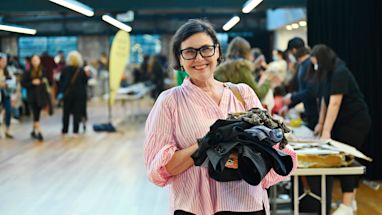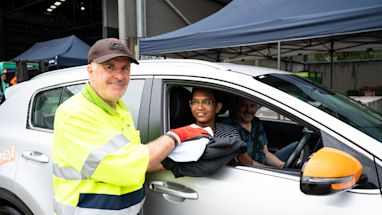Ibises are a common sight around our local area.
The Australian white ibis is native to Australia. They prefer wetlands but can adapt to any habitat that isn’t extremely dry.
What do ibises eat?
Ibises have long downcurved, slender bills that they use to probe into shallow water, mud or grass when looking for fish, frogs, crayfish, mussels, shellfish, crabs and insects.
Due to their changing habitat and their expanding population, many ibis are supplementing their diets from landfill sites and bins in our local area. This change in behaviour has led to their nickname ‘the bin chicken’.

Can I feed ibises?
Nope.
Being opportunistic, ibises are prone to feeding on human scraps. Do not feed the bin chickens, and make sure to securely dispose of leftovers in covered bins.
What can I do to help ibises?
There are 2 ways you can help this Sydney icon.
- Instead of feeding ibis, why not keep an eye out for wing tags and report it to the BigCity Birds App. This helps researchers understand the distribution and movement of urban ibises.
- You can also get involved in Citizen Science projects about ibises in our local area.
What do you call a group of ibises?
A collective noun is any noun that is used to name a group of something.
Ibises have 2 collective nouns. When they’re standing around, they’re called a colony but in flight they’re called a wedge. This is because ibises typically fly together in a triangular pattern.

This article is part of a monthly series about our feathered friends. Each month, our Urban Ecology team will share fun facts about birds in our local area and how we can keep them happy and healthy.



